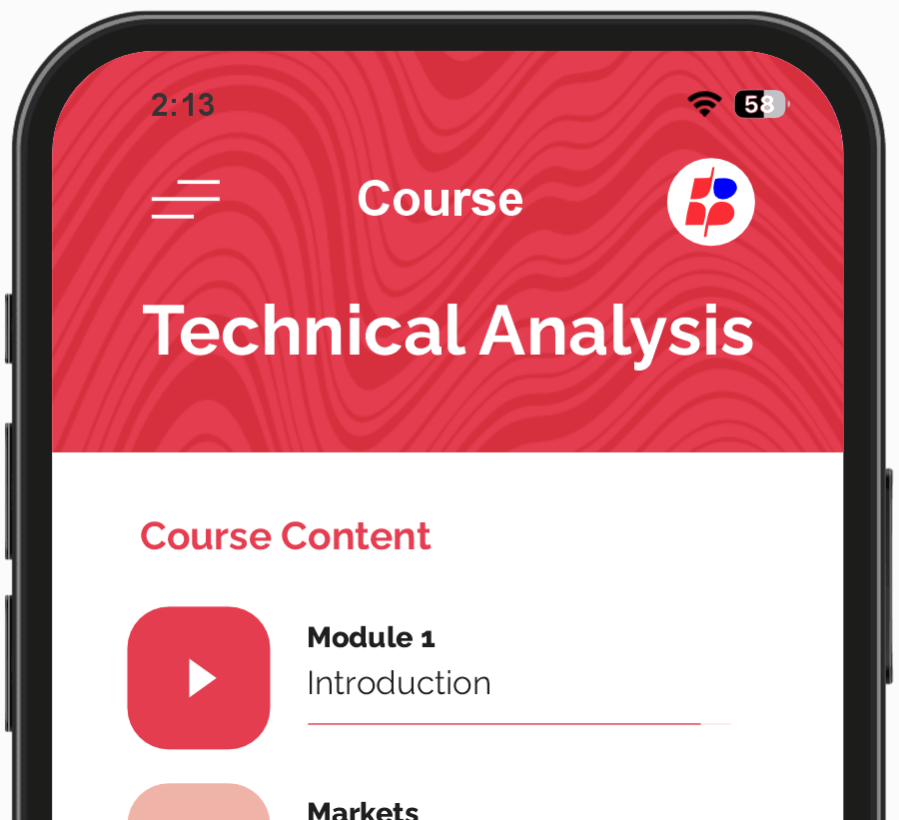Wave Trend Oscillator (WTO) is a technical analysis tool designed to help traders identify overbought and oversold conditions, spot potential reversals, and follow trends more effectively.
Often compared to oscillators like the Relative Strength Index (RSI) and Moving Average Convergence Divergence (MACD), WTO is known for its best ability to capture price momentum by analyzing market waves.
In This Post
What is the Wave Trend Oscillator?
The Wave Trend Oscillator is a momentum-based indicator that measures the underlying strength and direction of market trends.
Its main goal show when a market is potentially overbought or oversold, helping traders enter and exit trades at optimal points.
Features
- Momentum measurement
Tracks the strength and speed of price movement to assess whether a trend is gaining or losing momentum.
- Overbought/oversold zone
Helps traders identify when price action is stretched too far in one direction, signalling potential reversals.
- Signal line crossover
Generates trading signals when the Wave Trend line crosses above or below a signal line, indicating potential trend shifts.
How Wave Trend Oscillators Work
The Wave Trend Oscillator works by calculating the relationship between price andmoving averages over a set period.
This allows it to smooth out market noise and provide more reliable signals. The WTO consists of two primary lines:
Wave Trend line (WT): The main oscillator line, which fluctuates based on price momentum.
Signal line: A smoothed moving average of the WT line used to generate buy and sell signals when crossovers occur.
Components of the WTO Calculation
1. Price median
The midpoint between the high and low prices of a candle is used as the foundation for the WTO calculation.
Smoothing
The price median is smoothed over a specified period (typically 10-20 bars) using moving averages.
2. Signal line
Another smoothed moving average of the WTO is applied to generate buy/sell signals.
These components allow the WTO to be highly responsive to price movements, making it an excellent tool for tracking market trends and anticipating reversals.
How to Interpret the Wave Trend Oscillator
The WTO helps traders by identifying key signals and patterns that suggest when a trend is likely to reverse or continue. Here are some critical signals and how to interpret them:
1. Overbought and Oversold Levels
Overbought: When the WTO line rises above a certain threshold (usually +60 or +70), the market may be overbought. This suggests that buying pressure is exhausting, and a reversal to the downside may occur.
Oversold: When the WTO falls below a certain level (typically -60 or -70), it indicates that the market may be oversold, and a reversal to the upside is possible.
2. Wave Trend and Signal Line Crossovers
Bullish crossover: When the Wave Trend line crosses above the signal line from an oversold level, it signals a potential buying opportunity.
Bearish crossover: When the Wave Trend line crosses below the signal line from an overbought level, it indicates a possible selling opportunity.
3. Divergences
Bullish divergence: If the price makes lower lows while the WTO makes higher lows, it suggests weakening bearish momentum and the possibility of a bullish reversal.
Bearish divergence: If the price makes higher highs but the WTO creates lower highs, this indicates weakening bullish momentum and a potential bearish reversal.
Practical Uses of the Wave Trend Oscillator in Trading
1. Spot Overbought and Oversold Conditions
One of the main uses of the WTO is to identify when a market is overbought or oversold. In these conditions, the market is likely to reverse or undergo a correction. Traders can use this information to time their entries and exits more effectively.
2. Confirming Trends and Reversals
The WTO is an excellent tool for confirming ongoing trends. For example, in an uptrend, traders can look for bullish crossovers (where the WTO crosses above the signal line) to confirm that upward momentum is strong. Conversely, in a downtrend, bearish crossovers can signal that downward momentum remains intact.
3. Enhancing Other Indicators
The WTO works well when combined with other technical indicators like support and resistance levels, candlestick patterns, or moving averages. Using the WTO alongside these tools can help filter out false signals and provide more accurate trading decisions.
Wave Trend Oscillator Trading Strategy Example
Step 1: Identify Trend Direction
First, determine the general trend by analyzing price action or using a moving average (such as the 50-period moving average). If the price is above the moving average, it indicates a bullish trend, and vice versa.
Step 2: Wait for Crossover Signals
Once the trend direction is confirmed, wait for the WTO to give a crossover signal in the direction of the trend.
For example, if the market is in an uptrend, wait for the Wave Trend line to cross above the signal line from an oversold level.
Step 3: Set Entry and Exit Points
Once you receive a crossover signal, enter the trade in the direction of the trend. Set a stop-loss just below the recent swing low in a bullish trade or above the recent swing high in a bearish trade.
You can use the WTO to gauge exit points, such as when it enters an overbought or oversold zone or when the trend starts to weaken.
Advantages of the Wave Trend Oscillator
1. Versatility
The WTO can be used across different timeframes and markets, including forex, stocks, and cryptocurrencies, making it a flexible tool for various trading styles.
2. Clarity in trends
Its smoothing mechanism reduces market noise, allowing traders to focus on meaningful price trends.
3. Early signals
The WTO often provides early indications of trend reversals, helping traders get ahead of market moves.
Limitations of the Wave Trend Oscillator
1. Lagging signals
Like most oscillators, the WTO can sometimes lag behind price action, especially in fast-moving markets, which may lead to late trade entries or exits.
2. False signals
In sideways or ranging markets, the WTO can generate false signals, so it’s essential to use other indicators for confirmation.
3. Not ideal for choppy markets
The WTO is less effective in highly volatile or choppy conditions where price movements are erratic.
Frequently Asked Questions
1. How does the Wave Trend Oscillator identify overbought and oversold conditions?
The WTO identifies overbought and oversold conditions when its values cross certain thresholds.
Typically, if the WTO rises above +60 or +70, the market is considered overbought, indicating a potential reversal.
Similarly, if it falls below -60 or -70, it signals an oversold market, where a bounce to the upside may occur.
2. What is a crossover signal in the Wave Trend Oscillator?
A crossover signal occurs when the Wave Trend line crosses the signal line. A bullish crossover happens when the WTO line moves above the signal line, suggesting a potential buy opportunity.
A bearish crossover occurs when the WTO line crosses below the signal line, indicating a possible sell opportunity.
3. Can the Wave Trend Oscillator be combined with other indicators?
Yes, the WTO works well in combination with other technical indicators like support and resistance levels, moving averages, or candlestick patterns.
Using these tools together helps filter out false signals and improves the accuracy of your trades.
Conclusion
The Wave Trend Oscillator (WTO) is a powerful tool for traders who want to better understand price momentum and identify potential reversal points.
By analyzing the movement of the Wave Trend line and its crossovers with the signal line, traders can spot overbought and oversold conditions, track market trends, and anticipate turning points in price action.
When used alongside other technical analysis tools, the WTO can help improve the accuracy of your trades and give you a better grasp of the market.



